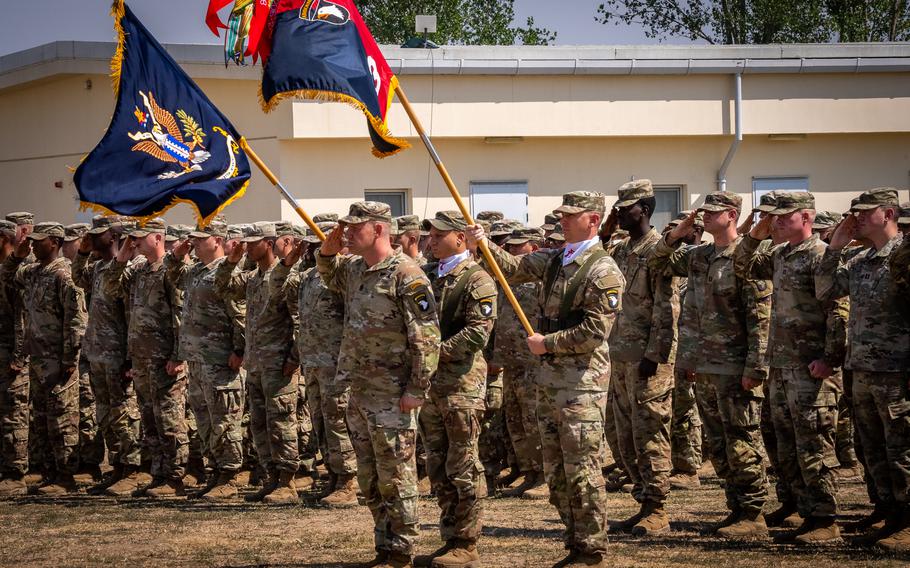
Soldiers from the 101st Airborne Division transfer authority to the 10th Mountain Division at Mihail Kogalniceanu Air Base, Romania, on July 15, 2024. Soldiers sent on operational deployments lasting more than 60 days will get a pay bump effective immediately, Army Secretary Christine Wormuth said on Oct. 14, 2024. (Julius Harris/U.S. Army)
Soldiers sent on extended operational deployments lasting more than 60 days will soon get a pay bump, the Army’s top civilian said this week.
The new special duty pay adds up to $240 per month for all soldiers, regardless of rank, Secretary of the Army Christine Wormuth said Monday.
“All soldiers of all ranks are sharing the rigors of deployment the same and they are all away from their families, so we felt like a flat rate made sense to us,” Wormuth told reporters at the annual Association of the U.S. Army meeting in Washington.
The benefit, applied retroactively to Oct. 1, is in recognition of the hardship of “being away from families, but also the rigors of deployment,” she said. It wasn’t clear when the pay would begin showing up in paychecks.
Wormuth said she expected the stipend to remain in place for the long-term.
The stipend is tied to operational deployments that last for more than 60 days. Missions such as those carried out by rotational Army units sent to Europe to counter potential Russian aggression on NATO’s eastern flank are among the deployments eligible for the extra pay.
Wormuth said time spent on trips to Army training centers, where units often go to prepare for upcoming deployments, don’t qualify for the special pay.
The Army has reduced the number of troops it has based overseas, especially in Europe, since the end of the Cold War. However, it has stepped up its presence on the Continent over the past decade with rotational brigades and battalions moving in and out of countries such as Poland, Germany and Romania on a regular basis.
The heavy reliance on such units to carry out deployments ranging from six to nine months has raised questions about whether the rotational model puts too heavy a strain on soldiers.
A March study by the Center for Strategic and International Studies reported that there are indications that troops on accompanied tours have higher morale than their rotational counterparts enduring long family separations.
“Rotational deployments also lead to more discipline issues and increased divorce rates,” according to the report, which cited lower reenlistment rates for units involved in rotational missions.